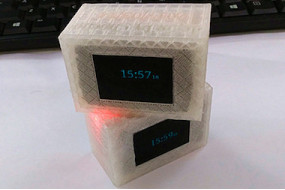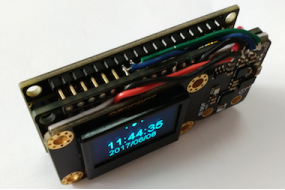INTRODUCTION
An OLED (organic light-emitting diode) has many
advantages over traditional LCD displays, including a faster response
speed, thinner profile, lower power consumption and excellent shock
resistance. An OLED can be widely used in mobile devices for display
applications. Used in conjunction with a mini Arduino-based
microcontroller such as the Beetle or CurieNano, it is a straightforward
process to make a simple wearable application.
Our Gravity OLED 12864 display is a self-luminous display module with a
blue background. The display areas is 0.96”and uses an IC SSD1306 chip.
The OLED screen supports I2C communication and refresh rates of up to
60Hz. The module uses the Gravity I2C common interface for easy plug and
play usage – meaning you can connect it without the need for wires -
just plug it straight in to your device. The display bezel is
constructed from aluminum alloy which protects the screen from scratches
and damage.


























